This morning nine butterflies had emerged from their chrysalises. Right now they are all in a hanging net waiting for me to release them, which I will do shortly.
Last summer my dad planted, as usual, a couple of rows of cabbage in the garden. For a while all was well, my dad even commented that the butterflies seemed to have left them alone this year. But by the end of summer they were covered in caterpillars as never before. My dad gave me two options, either I could take the caterpillars and rear them, or I could take the caterpillars and feed them to the hens. I chose the former. The caterpillars were of the typical two species that one would find on cabbage, the large white and the small white. Small white caterpillars are nondescript and green. Large white caterpillars, on the other hand, are pale green & yellow, mottled with black patches, and covered with soft bristles. They also have, when they get older, a pair of blue eyes.
 Large White caterpillar. Photo courtesy of Wikipedia.
Large White caterpillar. Photo courtesy of Wikipedia.There were overwhelmingly more large white caterpillars than there were small white, which is reflected in the fact that this year I have released about forty large whites so far, but only two small whites.
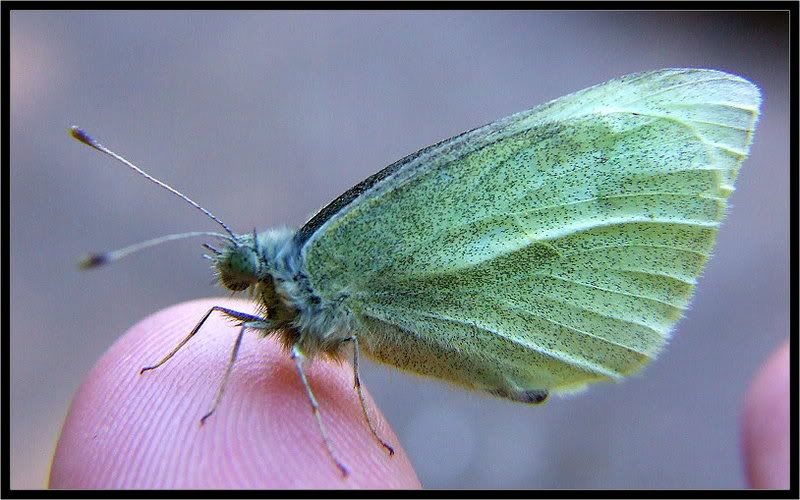 Small White. Photo courtesy of SJV.
Small White. Photo courtesy of SJV.
 Large White. Photo courtesy of me.
Large White. Photo courtesy of me.
Whenever I talk to people about the different butterflies I’ve seen, the conversation usually goes along these lines:
[Me] “…. and it turned out to be a painted lady, which is the earliest I’ve ever seen one”
[Other] “Oh really? Well I don’t know that much about butterflies, but I’ve seen a red admiral before, and a cabbage white obviously”
[Me through gritted teeth] “There isn’t actually a type of butterfly called the cabbage white, there are actually four, possibly five…” * muffled sobs *
I don’t know where people get this from, even the most casual perusal of even a general book of garden wildlife will tell you that there is more than one species of butterfly which is lumped under the heading ‘cabbage white’.
In fact I decided to look up ‘cabbage white’ on t’internet and see what I found, and the third website that came up was this:
http://www.bbc.co.uk/nature/wildfacts/factfiles/398.shtmlNow, what you’ll notice is that nowhere on the page does it mention that ‘cabbage white’ isn’t even a type of butterfly, and even more ridiculously, it says that the scientific name of the ‘cabbage white’ is
Pieris rapae which is actually the scientific name of the small white. Small whites do indeed feed on cabbage, but as I mentioned earlier, the proportion of large whites vastly outnumbers them. Then, to add insult to injury, the pictures of the caterpillars on the webpage are actually large white caterpillars, and thus a different species to what they said they were talking about.
And that is meant to be the ‘BBC – Science & Nature’ webpage.
So how many different species can be confused under the heading ‘cabbage white’? Well, I’ve already mentioned two of them, small white and large white, but there are others. The next most common species to get lumped in is probably the green-veined white (
Pieris napi).
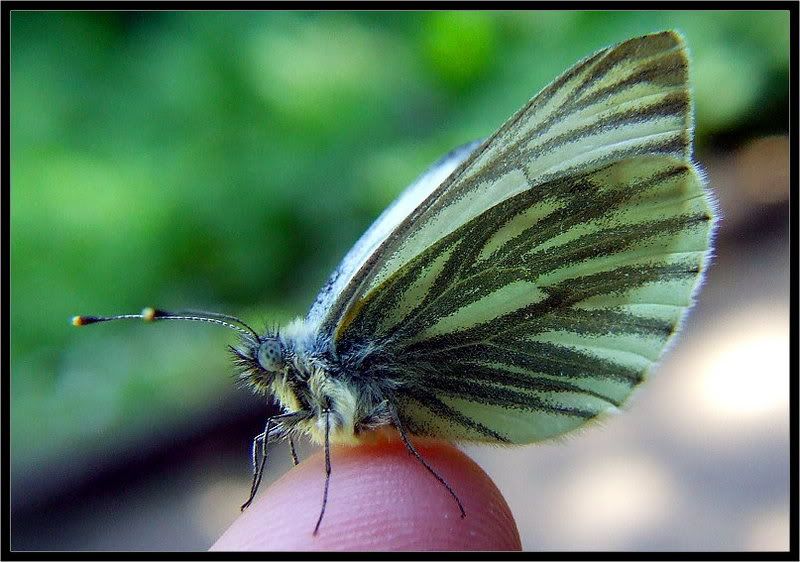 Green-Veined White. Photo courtesy of SJV.
Green-Veined White. Photo courtesy of SJV.Which, whilst distinctive at rest, can be devilishly tricky to tell apart in flight. Another species that can be confused is the orange-tip (
Anthocharis cardamines). The males are highly distinctive, and so won’t be confused.
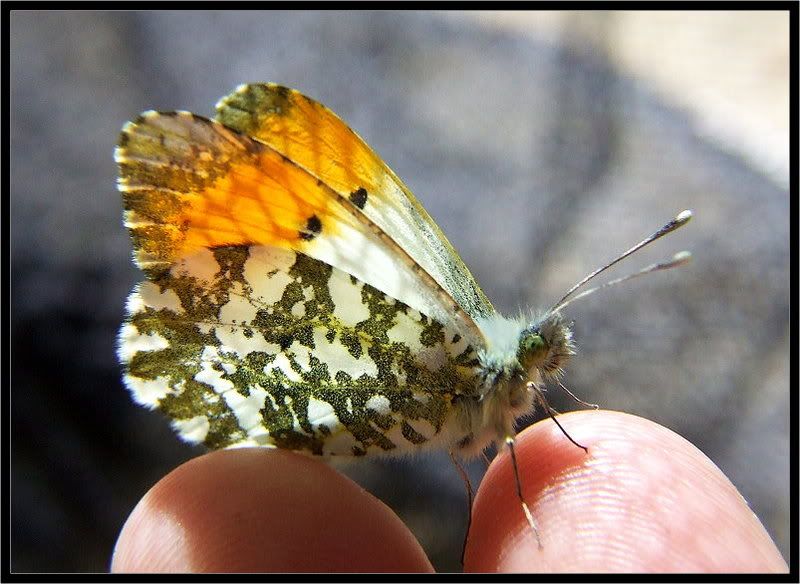 Male Orange-Tip. Photo courtesy of SJV
Male Orange-Tip. Photo courtesy of SJVBut the females, despite the green mottling on the outside of their wings, can once again be difficult to tell apart in flight.
 Female Orange-Tip. Photo courtesy of Wikipedia.
Female Orange-Tip. Photo courtesy of Wikipedia.These are the only species that are likely to be confused around where I live, however, outside of Yorkshire it is also possible that the wood white (
Leptidea sinapis), Réal’s wood white (
Leptidea reali), and possibly the rare migrant Bath white (
Pontia daplidice) could also be lumped under the same heading.
So there you have it, I hate cabbage whites because they don’t exist, and also because there is the possibility that seven different species could be lumped under the same heading.
Also because I’m kind, here is a riddle for you. What does a butterfly, a moth and a fish have in common?
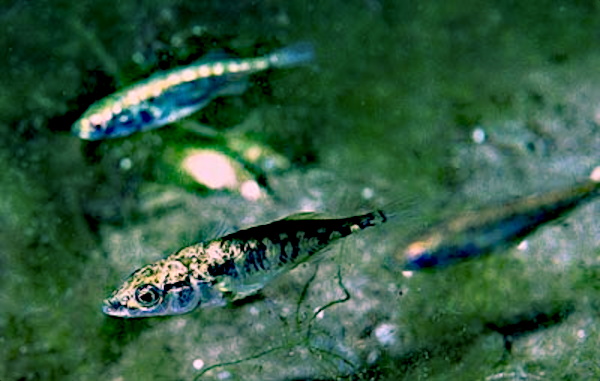
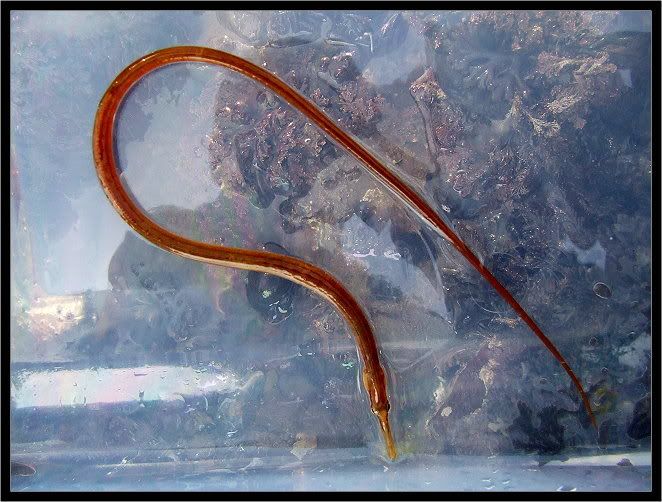 Snake pipefish. Photo courtesy of SJV.
Snake pipefish. Photo courtesy of SJV. Smooth newt. Photo courtesy of Wikipedia
Smooth newt. Photo courtesy of Wikipedia Large White caterpillar. Photo courtesy of Wikipedia.
Large White caterpillar. Photo courtesy of Wikipedia. Small White. Photo courtesy of SJV.
Small White. Photo courtesy of SJV. Large White. Photo courtesy of me.
Large White. Photo courtesy of me. Green-Veined White. Photo courtesy of SJV.
Green-Veined White. Photo courtesy of SJV. Male Orange-Tip. Photo courtesy of SJV
Male Orange-Tip. Photo courtesy of SJV Female Orange-Tip. Photo courtesy of Wikipedia.
Female Orange-Tip. Photo courtesy of Wikipedia.